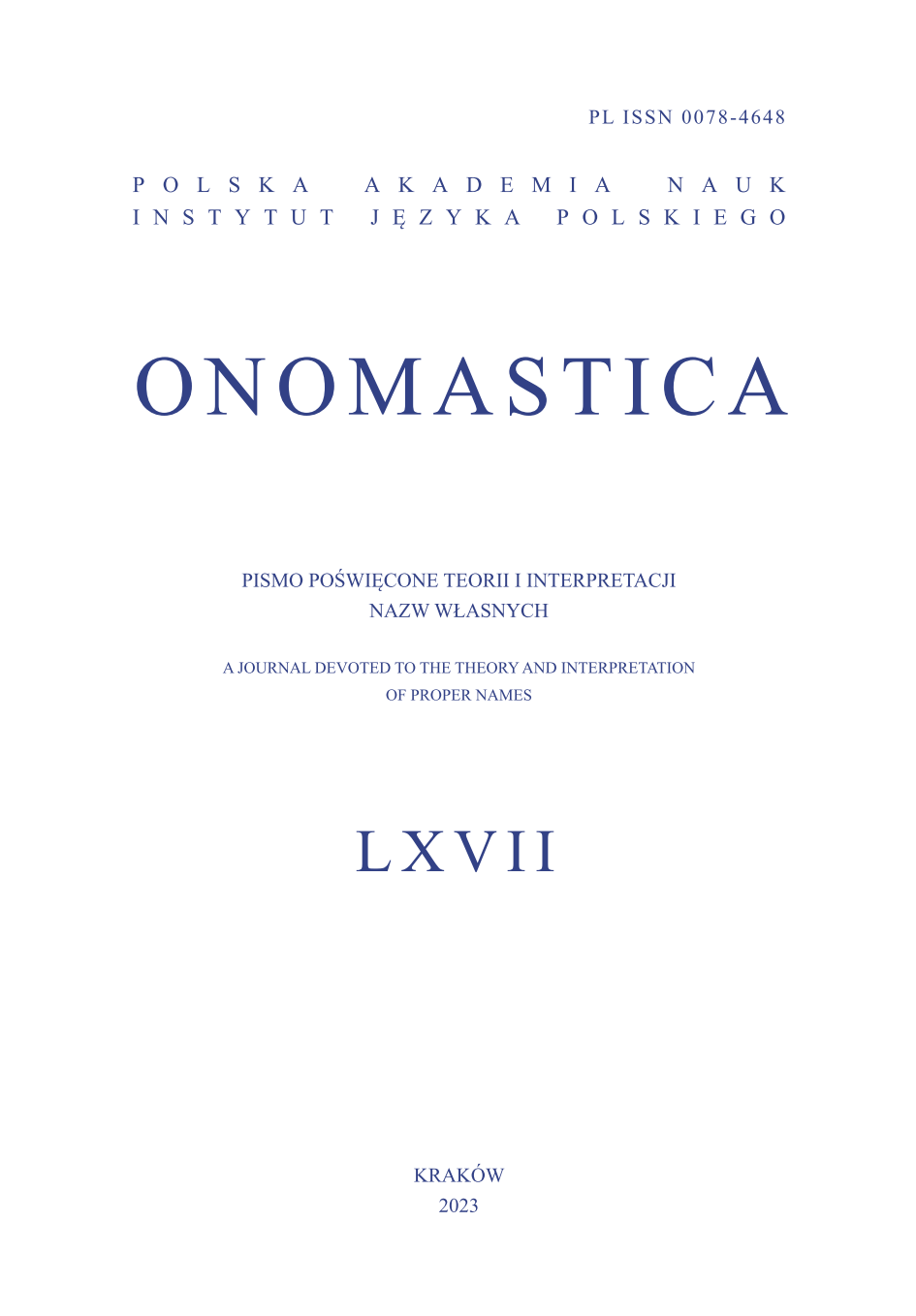Abstract
The aim of this review article is to introduce additions and clarifications, as well as to correct errors in a work which is important from the point of view of research on urban toponymy. The author of the review appreciates the value of the monograph in which Groblińska gathered a large amount of material consisting of 396 unofficial urban names of Łódź, collected mostly by means of questionnaires and subjected to semantic, communicative and formal analyses. The author of the review disagrees with the opinion of Groblińska, who claims that Łódź became an important cultural and academic centre at the beginning of the 21st century. The city obtained such a status much earlier, and especially immediately after World War II, which is explained on the basis of a number of illustrative examples. For example, the University of Łódź, which continued the traditions of the Free Polish University — Łódź branch (1930–1939) was founded in 1945. A new etymology of the name Park Śledzia (‛herring park’) was presented: not from Jewish shops and herring warehouses on the area of the later park (as in Groblińska), but from śledź ‘herring’, i.e. in the criminal parlance ‘prosecutor, investigator’. The author publishes corrections and comments to the headline articles developed in Groblińska’s book, e.g. Wieża Babel, Grandka, Złoty Róg. Work on the unofficial urban names of Łódź should be continued.
References
Bieńkowska, D., Cybulski, M., Umińska-Tytoń, E . (2007). Słownictwo dwudziestowiecznej Łodzi. Konteksty historyczne, społeczne, kulturowe [Vocabulary of twentieth-century Łódź. Historical, social and cultural contexts]. Łódź: Wydawnictwo Uniwersytetu Łódzkiego.
Dunaj, B. (red.). (1998). Słownik współczesnego języka polskiego [A dictionary of contemporary Polish]. T. 1–2. Warszawa: Przegląd Reader’s Digest.Fąka, P., Krupa-Ławrynowicz, A., Kurkowska, E., Kurowska, K., Owczarek, P.,
Podolska, J . (red.). (2015). Bałucki słownik [A Baluty dictionary]. Łódź: Centrum Dialogu im. Marka Edelmana. http://hdl.handle.net/11089/12958
Groblińska, J. (2020). Nieoficjalne nazewnictwo miejskie Łodzi. Słownik [Unofficial city names of Łódź: A dictionary]. Łódź: Wydawnictwo Uniwersytetu Łódzkiego.
Instytut Teatralny im. Z. Raszewskiego. (b.d.). Teatr im. Stefana Jaracza. W: Encyklopedia Teatru Polskiego. https://encyklopediateatru.pl/teatry-i-zespoly/529/teatr-im-stefana-jaracza (dostęp: 22.11.2022).
Jędrzejczyk-Kaźmierczak, I. (2012, 31.03). Kiedyś było 30 kin, teraz jest ich tylko 8. Express Ilustrowany. https://expressilustrowany.pl/kiedys-bylo-30-kin-teraz-jest-ich-tylko-8-zdjecia/ar/856219
Kurczaki (Łódź). (2022, 10.07). W: Wikipedia. https://pl.wikipedia.org/w/index.php?title=Kurczaki_(Łódź)&oldid=67567168
Muzeum Sztuki w Łodzi (2022, 09.12). W: Wikipedia. https://pl.wikipedia.org/w/index.php?title= Muzeum_Sztuki_w_Łodzi&oldid=68189238
Popławska, A. (2002). Opracowanie [Elaboration]. W: S. Wyspiański, Wesele. Kraków: Greg.
Rymut, K. (1987). Nazwy miast Polski [City names of Poland]. Wrocław: Zakład Narodowy im. Ossolińskich.
Stępniak, K., Podgórzec, Z. (1993). Słownik tajemnych gwar przestępczych [A glossary of secret criminal slang]. Londyn: Wydawnictwo Puls.


